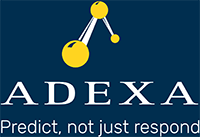Just S&OP for Visibility is Limited and Myopic
Most organizations searching for better supply chain visibility, turn to Sales and Operations Planning Solutions (S&OP) as a first step to their digitalization of supply chain and ultimately autonomous planning. Regrettably, S&OP is too high level, the modeling is too weak to represent a digital supply chain twin, and does not have a real picture of the operations. It only has knowledge of fixed lead-times of suppliers, high level bucketed capacity of resources and forecasted demand. According to a recent survey by Gartner, only 20% of the data goes from operations to planning. 80% remains at the operations level. You get the picture!
Many try to resolve this by “integrating” their operation systems to their planning. However, their notion of integration is merely streaming of data. Two disjointed systems with dissimilar logic, diverse work flow and different set of data cannot possibly be synchronized to know what the other is doing. Either too much or too little is expected from the operations. Operations, trying to maximize and optimize resources, may miss critical due dates; and false commit dates are given to the customers by S&OP not knowing the issues and events that are causing disruptions such as supplier delays and equipment breakdowns.
Furthermore, since changes of behavior in operations are invisible to the S&OP process, the latter ends up having an outdated and static picture of the operations resulting in further discrepancy between the two processes. The reverse is also true, changes in supplier and customer behavior are unknown to the operations and therefore the wrong assumptions are made in order to optimize delivery and utilization.
S&OP and S&OE are a continuum. You need to shift from one to the other seamlessly. They are parts of the same body; and there is no separation of disjointed parts. One evolves from the other. One system that can handle different granularity and frequency of data depending on the maturity of the organization.
Without accuracy of the supply chain representation, or a digital supply chain twin, it would be impossible to project reliable commit dates and dependable financial projections. But more importantly, once a S&OP solution is implemented where do you go next? A separate disjointed S&OE solution? How do you get the model to be accurate enough to go from S&OP modeling to a digital supply chain twin, let alone autonomous planning?
Learn more on this topic and how to merge planning and execution at Adexa.



